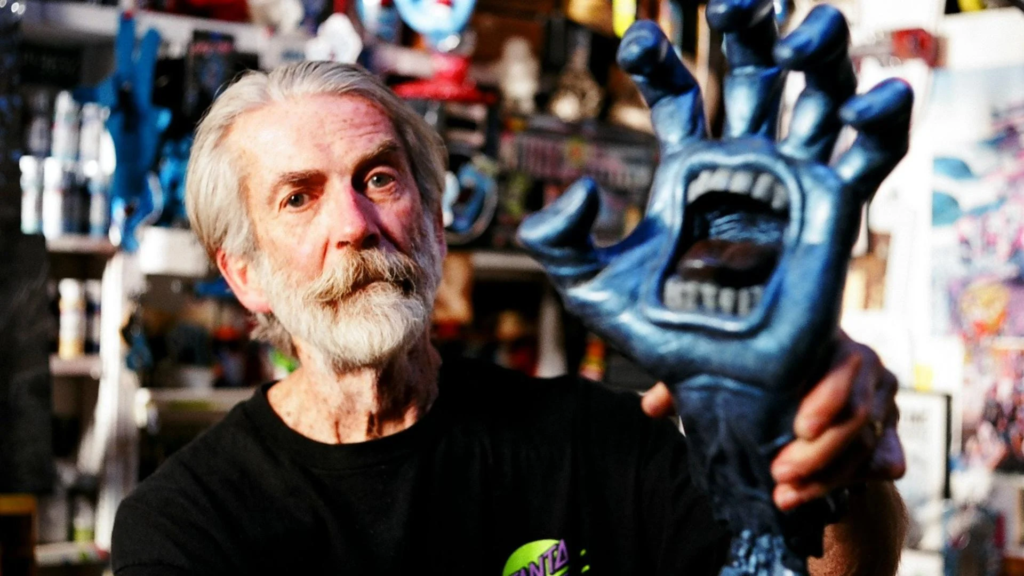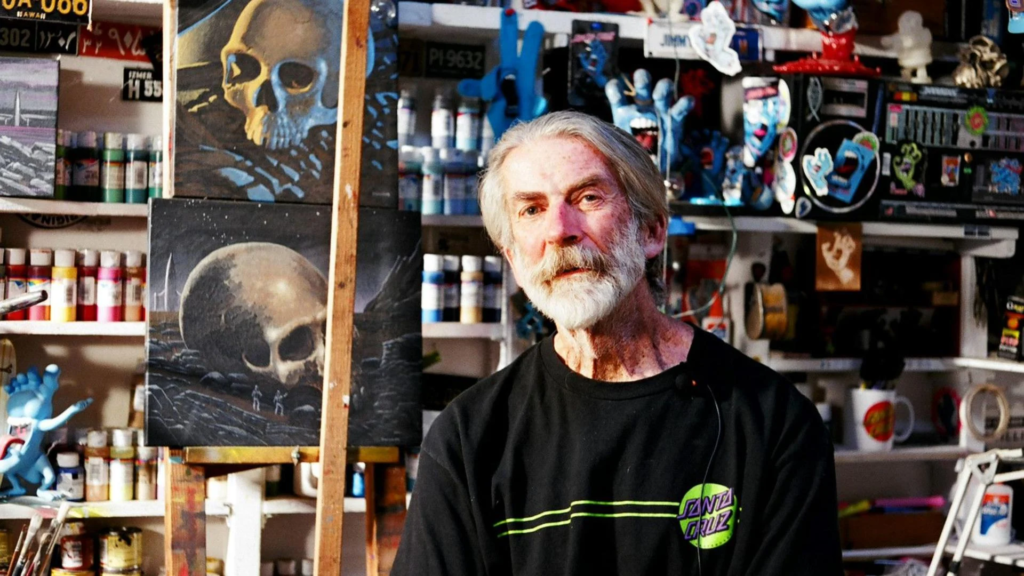Director: John Makens
Stars: Neil Young, Chad Muska, Steve Alba
Synopsis: Embark on the epic ride of Jim Phillips, the genius behind skateboarding and rock culture’s electrifying art. This documentary explores Phillips’ unyielding commitment to his craft, embodying a testament to resilience in art and life.
The corporatization of the relatively informal Santa Cruz skating scene and the wider countercultural movement was, of course, inevitable but there’s still a bittersweet sense of loss that emerges when one thinks back to the halcyon days in which simply hanging out with a bunch of other social outcasts could be read as a countercultural gesture. We live in a world in which capitalism eventually comes to encompass everything, but we find ourselves desperate to hold onto the few things that appear to stand outside of the realm of commercial product. Fortunately, artists have found productive ways of responding to the complicated, often destructive relationship between art and commerce. The clash between pure, authentic artistic expression and soulless, draining financial concerns is not as simple as I have made it out to be. Many of the illustrators who flourished during the 1970s were willing to explore the contradictions inherent in producing commercial art in an irreverent manner.

One of the most prominent artists of this period was illustrator Jim Phillips, who hit his stride when he began working as the sole art director for NHS Inc. The sports equipment distribution company primarily targeted the youth market and Phillips became increasingly immersed in Santa Cruz’s burgeoning skate and surf subcultures. He found a way to achieve a form of artistic expression in a cut-throat professional environment, while also forming genuine bonds with other skating enthusiasts. His life story is captured in Art and Life: The Story of Jim Phillips (2024), a loose, affectionate portrait of a turning point in the history of the hippie movement. Phillips serves as a warm and engaging interlocutor; ready and willing to throw out amusing anecdotes at a moment’s notice, while also commenting on the links between the social climate of the 1970s and his development as an artist.
The documentary’s easy, free-floating structure allows it to jump fluidly from one shaggy dog story to the next and prevents it from feeling like a simple hagiography. Director John Makens wisely limits the scope of his documentary to a point where Phillips’s specific preoccupations as an artist can come into focus. There is always a danger, when attempting to tackle such an extraordinary, overwhelming subject, that a project will end up losing a sense of focus altogether. Makens offers up tantalizing glimpses of the bigger picture here but stops short of attempting to craft a Diaries, Notes and Sketches (1968) for the internet age. In narrowing his project’s focus down to the specifics of Phillips’s life story and professional successes, he finds a microcosm through which a larger story can be hinted at. It’s a fruitful approach to treading over ground that has already been subjected to a frightening level of close analysis.

There is also something enormously moving about the documentary’s joyful deconstruction of the Santa Cruz logo, which has come to be seen as Phillips’s magnum opus. This documentary asks us to view this iconic piece of branding as the centerpiece of a wider artistic movement within Phillips’s oeuvre. We get a greater sense of the build-up to the creation of this signature piece and the difficulties that an artist faces when challenged to keep producing after hitting a creative peak of sorts. A lot of this material will seem familiar to viewers who have watched a wide assortment of documentaries about the creative process but Makens’s take on this particular phenomenon is heftier than the likes of Jeff Koons: A Private Portrait (2023). He might not unearth anything groundbreaking but the journey ultimately serves as the destination and there’s plenty to enjoy if you go along with the ride.
The picture will naturally find its viewership among young aspiring artists who are likely to already be familiar with Phillips. However, I would recommend that those who aren’t already deeply embedded within the Santa Cruz underground scene still make an attempt to seek this film out. It has a certain universal appeal that taps into the deep need that humans have to find a sense of belonging within a larger community. The heyday of the Santa Cruz skate and surf subcultures might have passed but this documentary gives you a nostalgic yet clear-eyed vision of what it might have been like to experience those glory days firsthand.


